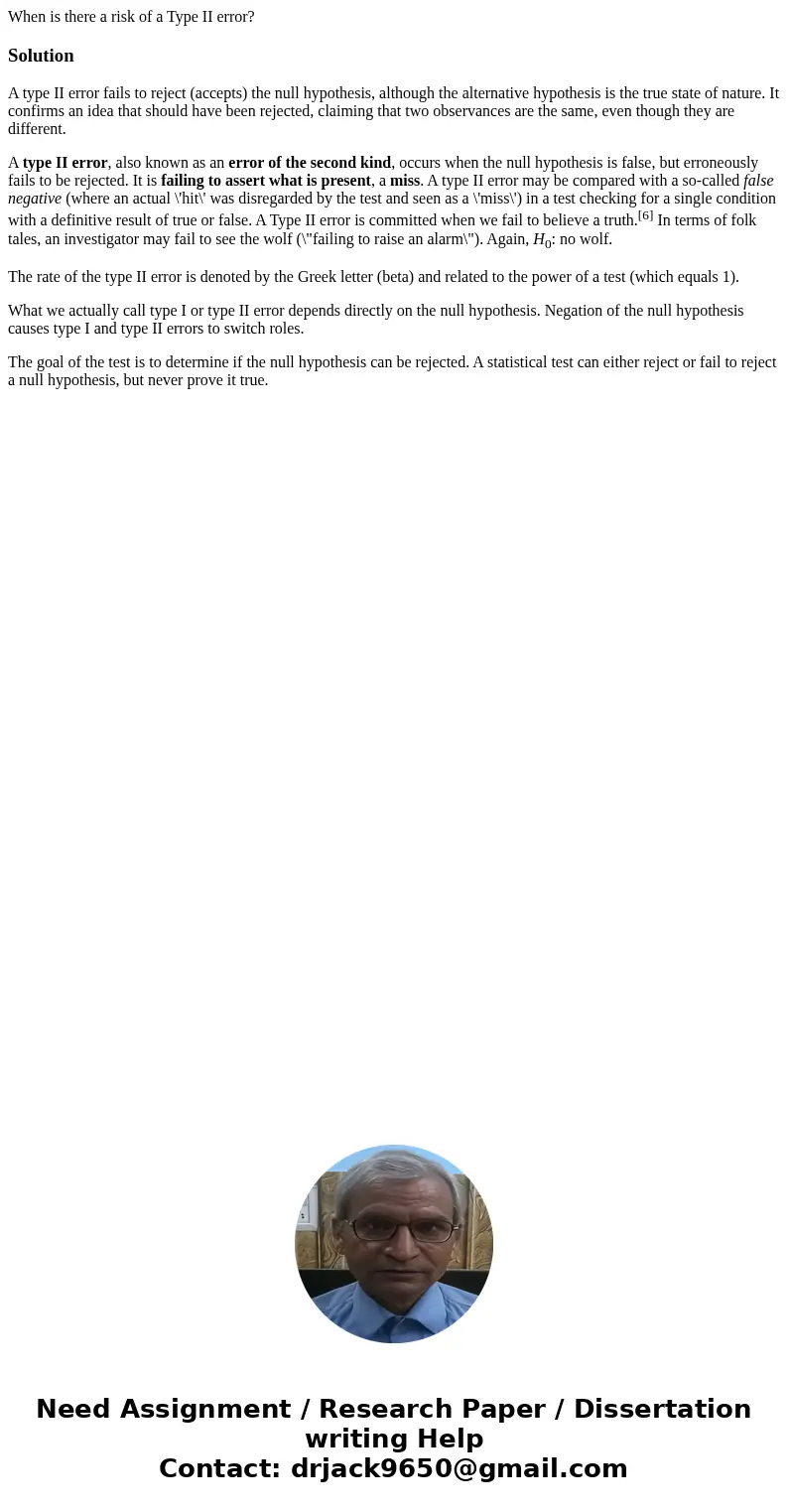When is there a risk of a Type II errorSolutionA type II err
When is there a risk of a Type II error?
Solution
A type II error fails to reject (accepts) the null hypothesis, although the alternative hypothesis is the true state of nature. It confirms an idea that should have been rejected, claiming that two observances are the same, even though they are different.
A type II error, also known as an error of the second kind, occurs when the null hypothesis is false, but erroneously fails to be rejected. It is failing to assert what is present, a miss. A type II error may be compared with a so-called false negative (where an actual \'hit\' was disregarded by the test and seen as a \'miss\') in a test checking for a single condition with a definitive result of true or false. A Type II error is committed when we fail to believe a truth.[6] In terms of folk tales, an investigator may fail to see the wolf (\"failing to raise an alarm\"). Again, H0: no wolf.
The rate of the type II error is denoted by the Greek letter (beta) and related to the power of a test (which equals 1).
What we actually call type I or type II error depends directly on the null hypothesis. Negation of the null hypothesis causes type I and type II errors to switch roles.
The goal of the test is to determine if the null hypothesis can be rejected. A statistical test can either reject or fail to reject a null hypothesis, but never prove it true.

 Homework Sourse
Homework Sourse